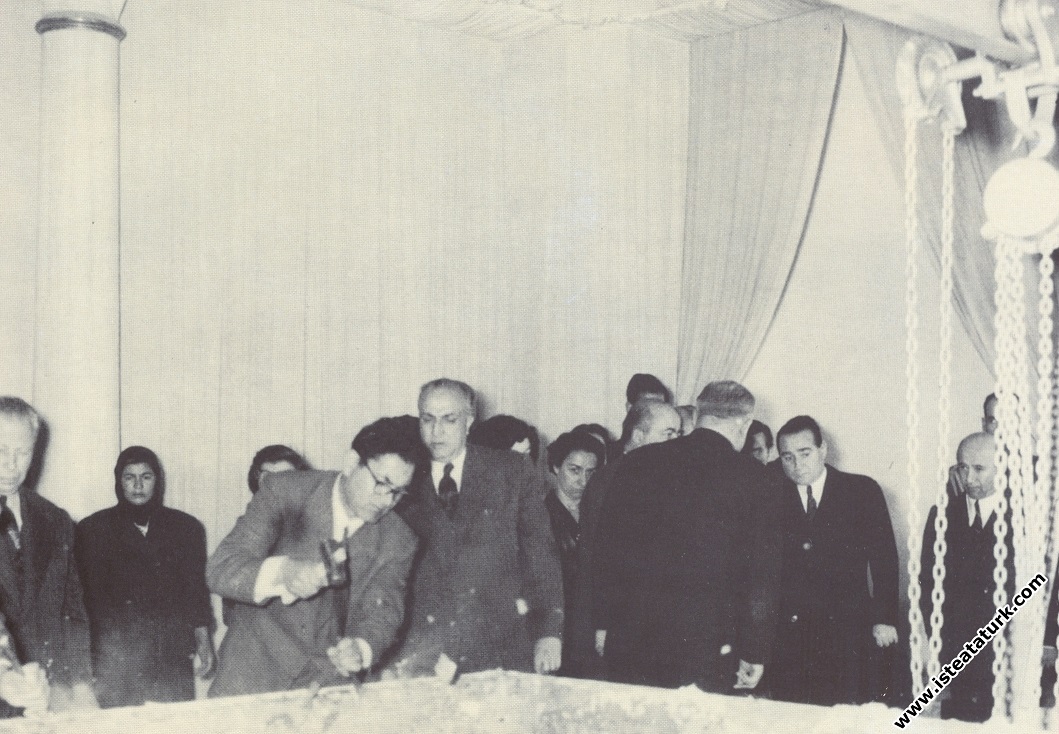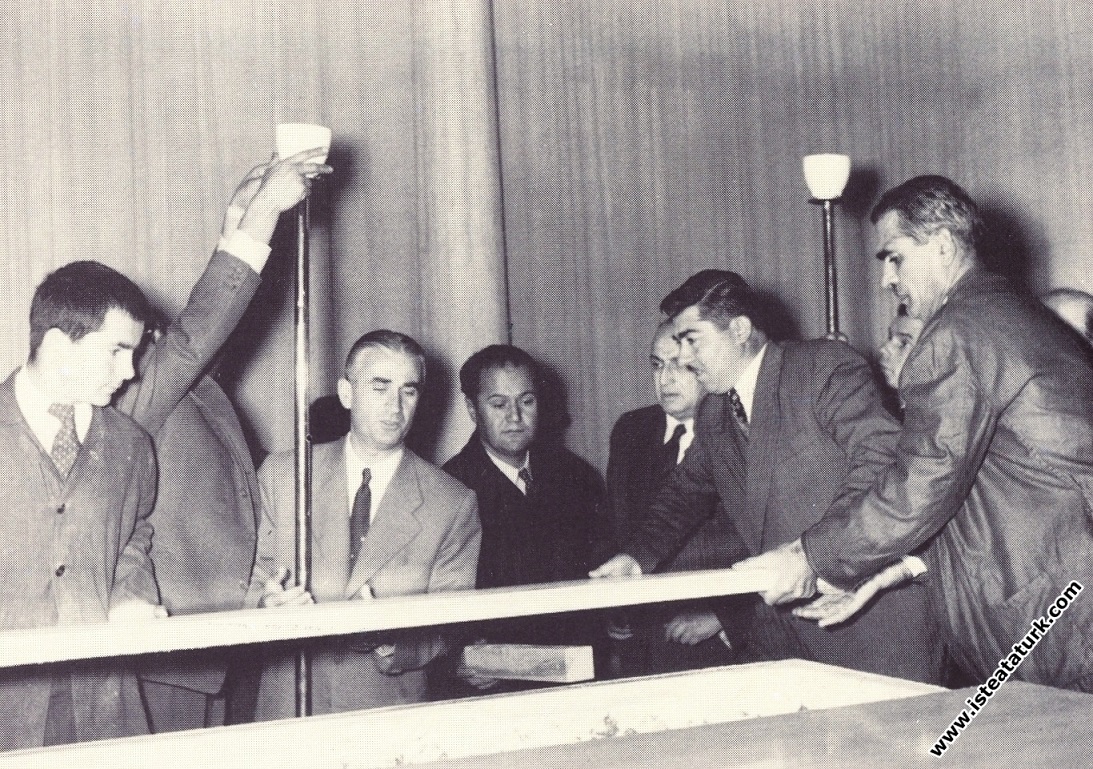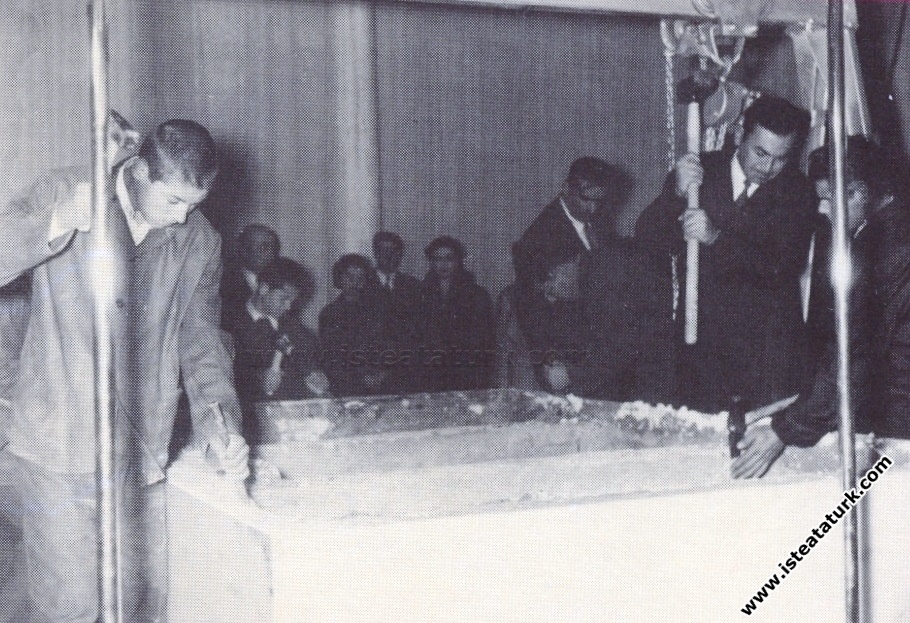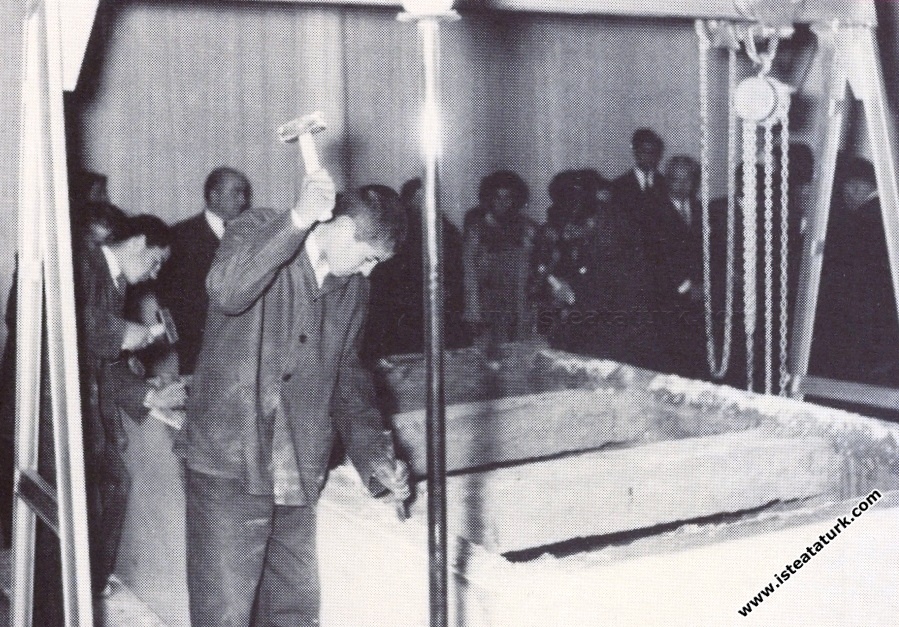The day the coffin of the Great Leader Atatürk was opened in the Ethnography Museum, Ankara. (9.10.1953)
The day the coffin of the Great Leader Atatürk was opened in the Ethnography Museum, Ankara. (November 9, 1953)
The Day Atatürk's Coffin Was Opened, 9 November 1953
On Sunday night, November 1953, at 23:30, Prof. Dr. Kamile Şevki Mutlu 's home phone rang. prof. Mutlu was the chair of the Histology and Embryology Department at Ankara Medical Faculty. He was a pathologist. The caller was Ankara Governor Kemal Aygün. Aygun,
-“Hodja,” he said, “We will carry our Ata's body to Anıtkabir on November 10. We formed a committee for this. We will bury the body in the ground in accordance with the traditions. However, we ask you to inspect it to document that it is preserved intact.”
prof. Happily, he refused at first. Mutlu was lying in bed with a fever of 40 degrees at that time. Citing his illness, he asked another colleague to do this task. However, Governor Aygün was insistent:
-“I will wrap you up and take you in wraps. This is a historic mission.”
Happily she agreed and went to the Ethnographic Museum on the morning of 9 November. Prime Minister Adnan Menderes, Speaker of the Parliament Refik Koraltan and former President Abdulhalik Renda were there. It was then that Mutlu realized what a mistake he had made by asking for his pardon. It was truly a historical testimony.
Until the Anıtkabir was built, a process called “embalming” was applied to protect Atatürk's body. Gülhane Professor of Pathological Anatomy Dr. During this procedure, carried out by Lütfi Aksu, a special formula was injected into the body with a syringe, and two small medicine bottles on which the formulas were pasted were placed in Ata's armpits. Because of this process, Atatürk's body was preserved in its current form. However, since the religion of Islam stipulated the burial of the dead, the temporary embalming had to be destroyed. Before the transfer of Atatürk to Anıtkabir, a committee was established for this process, and it was decided to open Atatürk's coffin in the presence of Prime Minister Adnan Menderes in order to spoil the embalming.
When the day of the coffin was opened and the committee members gathered; prof. Dr. Kamile Mutlu gave the instruction "Get started". The marble sarcophagus was dismantled, then the concrete was broken, and the pulleys that would lift the coffin were placed on the ceiling of the sarcophagus hall.
.jpg)
.jpg)
Marble sarcophagus is breaking
.jpg)
The reels are placed on the ceiling of the sarcophagus hall.
Speaker of the Parliament Refik Koraltan, Prime Minister Adnan Menderes and high-level representatives of the state gathered around the coffin and gasped. After the coffin was placed on the floor of the hall, Prime Minister Menderes was taking Atatürk's sister Makbule Atadan to the coffin, saying "Ma'am, welcome".
Atatürk's sister rested her head on the coffin and remained that way for minutes. Maybe she was remembering the days left in Thessaloniki, far away, maybe she was sending prayers to her brother's soul.
Makbule Atadan at the head of the coffin
And the coffin was unscrewed. Inside the wooden coffin was a metal coffin. Considering the possibility of gas accumulation in this chest, first a hole was drilled with an auger. No gas or odor.
The crate was full of sawdust. They were wood chips soaked in preservative solution! Sawdust was collected towards the foot of the body. A closed bottle filled with liquid was found among the sawdust. This was a sample of the solution used for body preservation, with its composition written on it. Atatürk's body was wrapped in a white shroud and then covered with a brown tarp. They began to unwrap the bandages. They were out of breath... They would see Ata's face for the first time in fifteen years.
There were a lot of rumors circulating among the people, such as "Naash rotted away", "The gases that came out exploded the coffin", "The guard fainted from the smell". When the wraps of the shroud were opened, Prof. Dr. With the help of those who were there, Mutlu got the catafalka and looked at Atatürk's face. Atatürk's skin turned brown; but his facial features were intact.
Ataturk researcher Prof. Dr. Utkan Kocatürk, Prof. Dr. According to his conversation with Kâmile Şevki Mutlu, Prof. Mutlu described the painting he saw as follows:
- “When the wet cotton mass covering his face was removed, I came across Atatürk's face that looked like a statue. A thin lock of her long blond hair fell over her left eyelid. It was as if Atatürk was sleeping in his bed in the Dolmabahçe Palace.”
prof. Mutlu called the members of the committee waiting to the side of the coffin. One by one, they looked inside the coffin. First of all, there was Prime Minister Adnan Menderes. Menderes, dressed in a dark suit, got on the catafalka with the help of his companions, and looked down timidly towards the coffin.
What happened at that moment, Prof. Happy explains:
- “Menderes was very excited. It turned pale in color. And then I saw that it was heading towards the museum's door. He did not look at Atatürk's face. I guess he didn't find that strength in himself."
Abdulhalik Renda was the last one. As soon as he faced Ata, he collapsed next to the coffin.
After everyone in the hall saw Atatürk one by one, the body was soaked with solution again. Ata's head was covered with cotton and his body was wrapped in a white shroud.
Meanwhile, a commissioner, associate professor of forensic medicine Assoc. Dr. He approached Cahit Özen, showed a piece of paper he was carrying in his hand, and said:
- “This paper was sent by Atatürk's nurse, Makbule Hanım. He wants him to be put in the shroud, on Atatürk's chest.”
Assoc. Dr. He glanced at the paper. Something was written in Old Turkish.
- “Atatürk will not accept such a paper. He gets angry and offended at us," he said. The commissioner folded the paper, put it in his pocket, and walked away. After all the procedures were completed, the people in the hall passed both sides of the body, drew basmala in unison and placed the body in the new coffin. This coffin was also placed in the large rosewood coffin in which he had been lying for 15 years. After it was covered with a flag, its cover was closed.
After Atatürk's coffin was placed on the catafalcon, the Teachers' School teachers and students carefully lay the Turkish Flag on the catafalcon. (November 10, 1953)
%20(7).jpg)
November 10, 1953
.jpg)
November 10, 1953
And on the morning of 10 November 1953, Atatürk's body was placed on the shoulders of 12 soldiers, in the gun cart that brought him to Ankara from Dolmabahçe 15 years ago, and transported to Anıtkabir, which will be his last stop, in this car pulled by 136 second lieutenants, accompanied by the mourning anthem. Atatürk's sister Makbule was watching the cortege, which was on its way from the Ethnography Museum to Anıtkabir, with sobs.
.jpg)
Ethnographic Museum 10 November 1953
.jpg)
Makbule Atadan is following the cortege with difficulty.
Meanwhile, representatives of all religious communities in our country took their places in the cortege. Armenian, Jewish, Catholic and Greek representatives and the President of Religious Affairs of the time were walking together. That glorious ceremony, broadcast on the radio, was as sad as it was 15 years ago, and the streets and avenues of the capital were crowded with people. Atatürk was moving to Anıtkabir, where he would stay forever!..
Ethnography Museum on November 10, 1953
Osman Ersoy and Halide İntepe were working as assistants at the Ethnography Museum on 10 November 1953. For this reason, they had the opportunity to see the ceremony held in the museum and Atatürk in the coffin for the last time. Osman Ersoy describes his impressions as follows:
- “I had not seen Atatürk when he was alive... I was terribly excited. We employees, assistants, officers took turns to the catafalka. He had a rather yellowed and shrunken face... He had a beard of one or two days. His brows were extraordinarily well-recognized.”
Halide İntepe says:
-“The last time I went and looked before the coffin was closed. His head tilted to the side. His face was untouched. He had a little beard. You know, if a person's longing dies, his eyes will remain ajar, just like that... But he didn't have a dead face. He seemed to be asleep..."
Source: Semra Atay, Başkent Üniversitesi Kültür Yayını Bütün Dünya Dergisi, Sayı: 2008/11. Sayfa: 27-31
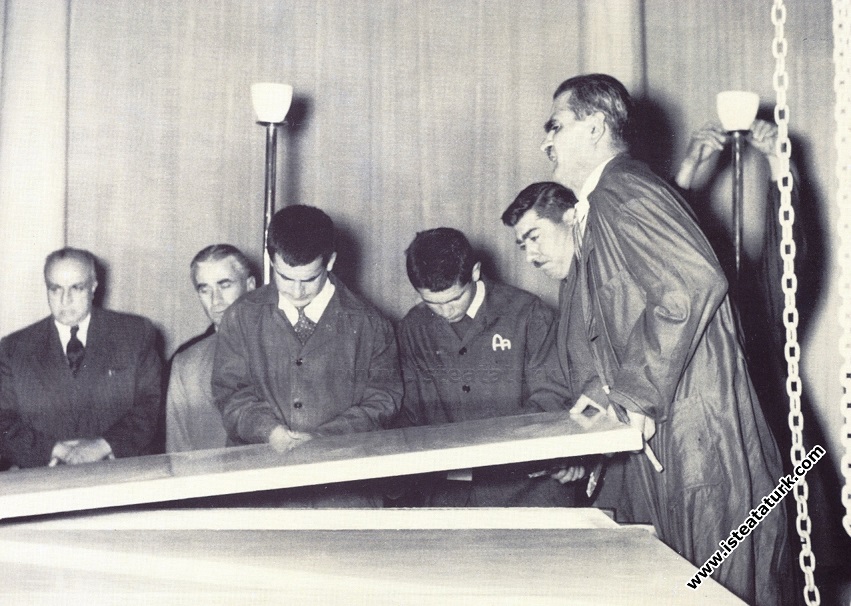
.JPG)
.JPG)
.JPG)
